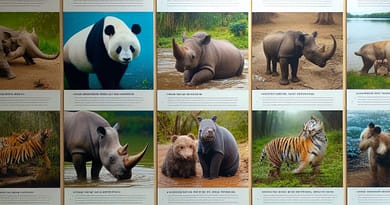Are Tigers Endangered Species?
Tigers around the world are subject to much speculation and attention, and numerous debates revolve around the question that ‘are tigers endangered species’. They are beautiful, majestic creatures that have fascinated the human race since its inception. Given that it is such an agile, strong animal, its hunting techniques and ways of conservation have been documented for a long time; some have even been used to train for physical fitness itself or hunting techniques for other animals. They are creatures that have evolved from the Saber Tooth tigers, and their extinction and endangerment have the entire wildlife conservation community worried.
Some Facts First
Tigers are known to be the natives of Asia, but they have also been found in mountainous, cold regions and in the steamiest rainforests. They are known to be at the top of every list of predators due to their sheer strength and physical agility. Nine subspecies of tigers are known to exist, with many different kinds falling under each category. Tigers vary in shape, size, strength, weight, gait, shape, color of coat, paws, physical features, and a lot of other characteristics. Each tiger species has a particular hunting style and technique that compliments their gait and physical strengths.
How Bad The Situation Actually Is?
Out of the nine species of tigers existing, three are said to have already gone extinct, as they have not been recorded or documented since the 1970’s. There are probably only 100,000 tigers left around the world, ranging from Siberian to Malayan to Bali to Javan tigers. Every single tiger species is said to be endangered due to the ruthless and inhumane hunting habits and practices of some people. If one puts together the numbers, there are currently only a meager 3,200 tigers that are endangered and remaining within the world. The rest have either died of old age, been hunted, or died during their time confined to zoos or other conservatories.
What Is Being Done To Curb The Extinction?
There are hundreds of wildlife conservation organizations that work tirelessly to ensure there are laws and bills erected against tiger hunting and such activities, but it is not possible to monitor every single crevice of every forest, mountain, or place where tigers inhabit. Illegal hunting practices are a major cause of endangerment and extinction for the tiger species. Habitats can easily be broken into, and people steal animals for their own private displays or for zoos, animal shows, circuses, and so on.
Endangered Habitats
Deforestation is also a major cause of the extinction of animals. Apart from the animals that are forced to inhabit urban or rural areas, there are also those that cannot survive outside of their natural habitats, and if those habitats are ruined or cut down, these animals die out. This is a horrible epidemic that especially swept the world during the 1980’s, as capitalism really reared its head and forests were cut down to make space for rural or urban areas. With the world’s population increasing, there is more and more space needed for humans to inhabit, so forests get cut down. Thus, animal extinction becomes one of the major losses of this practice. Of all the tigers existing in the far Russian regions, close to 300 remain, as massive deforestation and parching practices, as well as logging, road building, and developmental projects, have blocked the progress of tiger habitats. There are many threats to the breeding of these animals as well, since hunting is a large part of that particular culture. Apart from this, conservation methods are severely outdated, as they are the same as those utilized since the 1930’s, and climate as well as many other factors have changed since then. There is a need to analyze the strengths and weaknesses of keeping a tiger habitat in that region, as the tigers need a particular climate to survive.
Of all the Bengal tigers, around 500 remain, as the climate there consists mainly of monsoon-like weather and flooding is regular. Animal conservation efforts are not enough, as the technology being used for their protection is outdated. These are just some of the factors contributing towards the extinction and endangerment of the animals, and if serious efforts are not made soon, it is quite possible that tigers will die out completely as a race by the year 2020, as the race itself is steadily racing towards decline for decades, hinting that there are regions in the world where there are tigers endangered more than other regions.









